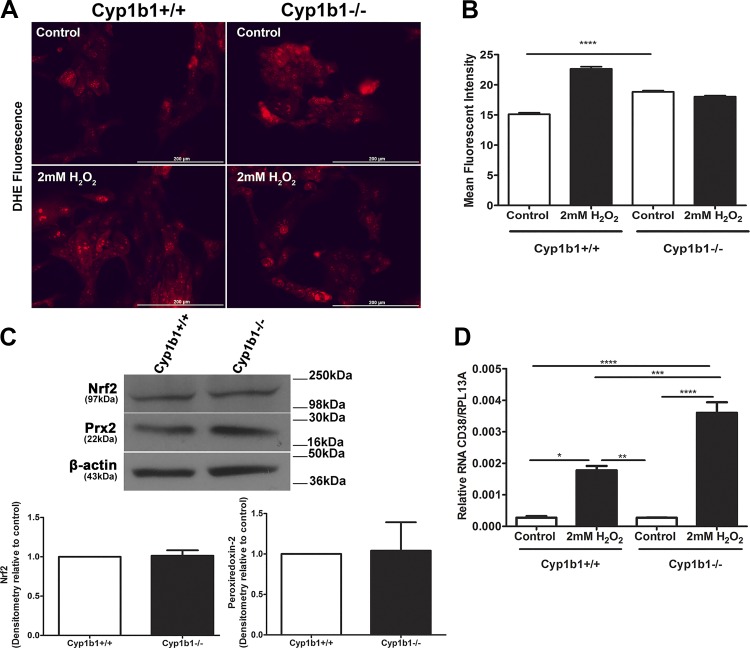Fig. 8.
Increased basal reactive oxygen species (ROS) levels and resistance to H2O2-mediated ROS production in cytochrome P450 1B1-deficient (Cyp1b1−/−) retinal astrocytes (ACs). A: the level of oxidative stress (ROS) in retinal ACs was assessed by dihydroethidium (DHE) staining under basal or challenged conditions (2 mM H2O2). B: quantitative assessment of data. Please note increased ROS levels in Cyp1b1−/− ACs compared with Cyp1b1+/+ ACs at basal level. Although a significant increase in ROS levels was observed in Cyp1b1+/+ ACs incubated with H2O2, no significant increase in ROS level was noted in Cyp1b1−/− cells incubated with H2O2 (****P < 0.0001; n = 4). C: expression of antioxidant genes in Cyp1b1+/+ and Cyp1b1−/− retinal ACs. We observed no significant differences in the levels of nuclear factor erythroid 2-related factor 2 (Nrf2) and its downstream target gene peroxiredoxin-2 (Prx2). D: enhanced expression of cluster of differentiation 38 (CD38) in Cyp1b1−/− retinal ACs incubated with H2O2. The level of CD38 mRNA was determined by quantitative PCR analysis of RNA prepared from Cyp1b1+/+ and Cyp1b1−/− retinal ACs incubated with or without H2O2. Please note that the basal expression of CD38 is similar in these cells regardless of Cyp1b1 expression. However, a significant increase in the levels of CD38 was observed with incubation with H2O2 that was more dramatic in Cyp1b1−/− ACs (*P < 0.05, **P < 0.01, ***P < 0.001, ****P < 0.0001; n = 3). Scale bars = 250 µm. RpL13A, 60S ribosomal protein L13a.

